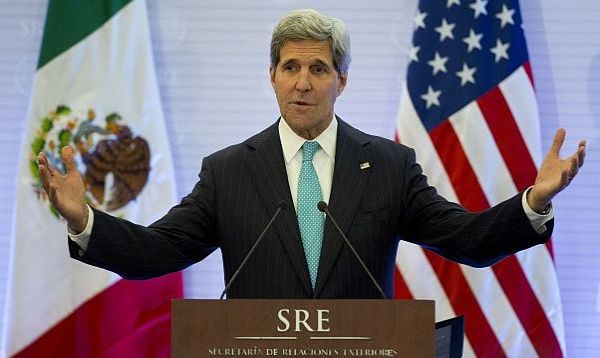Mexico City, Mexico — Young Americans wanting to study in Latin America have stopped looking so intently at Mexico, which has dropped from first to fourth for US students going to university in the region over the last 10 years.
Only about 4,000 US students now study in Mexico, with crime and drug violence being the main deterrent. More go to Costa Rica, Argentina, and Brazil.
The US government is seeking to boost the number of Americans studying in Latin America, which was one reason for coinciding visits Wednesday by both Secretary of State John Kerry and former Department of Homeland Security Secretary Janet Napolitano, who heads the 10-campus University of California system.
Napolitano said she wants to increase exchanges between University of California campuses and Mexican universities at all levels, from undergraduates to faculty and researchers. Of 233,000 students in the UC system, only about 40 study in Mexico each year, while about 1,900 Mexicans were at UC schools last year.
Student exchanges would help correct misperceptions on both sides of the border that Mexico is dangerous and that the United States is unfriendly to Mexicans, Napolitano said.
"The best way to change that is to have an actual experience," she said. "There has to be marketing on both sides of the border if we’re going to make this work."
Kerry announced the new goal of launching a bilateral forum for higher education, innovation, and research. President Barack Obama’s new higher education exchange initiative aims to have 100,000 US students studying in Latin America and 100,000 from the region studying in the US by 2020. A similar program in Mexico, "Proyecta," has the goal of sending 100,000 Mexican students a year to the US by 2018. Just over 14,000 Mexicans study there today.
"I’m convinced this is a way to strengthen our ties," Kerry said.
 |
| Former US Secretary of Homeland Security Janet Napolitano visited Mexico this week with Secretary of State John Kerry. Napolitano now heads the 10-campus University of California system. |
"Once the exchanges are delayed or stopped, institutions set up affiliations and programs elsewhere, having longer term consequences for the numbers," said Shannon O’Neill, senior fellow at the New York-based Council on Foreign Relations. "When the violence wanes, it can be hard for the numbers to rebound."
Justin Bogda, 21, did an internship at the US Embassy in Mexico City in the summer of 2013 while studying at the University of Southern California. He said when he told his family about his plans, they were frightened.
"They said, ‘Oh my God, there’s all the violence,’ because of what they see on the news,’" said the Kinnelon, New Jersey native. He said that in places like Mexico City, it’s more the perception than the reality.
According to the Institute of International Education, 8,360 Americans studied in Mexico in the 2000-2001 academic year. That dropped more than 50 percent to 3,815 by the 2011-2012 school year — the most recent figures available.
"The perception of safety is the main reason," said institute president Allan Goodman.
Today, laid-back Costa Rica is the No. 1 pick of US students, with nearly 8,000 Americans. The increase in students there can also be attributed to the US emphasis on environmental studies, with Costa Rica’s rainforests and national conservation programs, Goodman said.
In a document describing the "Proyecta" plan, the Mexican government acknowledges that the perception of insecurity has inhibited US students. It also cites a lack of English speakers in Mexico and Spanish speakers in the US as obstacles, and says most Americans know nothing about educational opportunities in their neighboring country to the south.
Goodman said both countries would benefit from increased exchanges, especially given the number of Americans now of Mexican origin.
"To have Americans growing up and know nothing about our Spanish-speaking citizens ... means that our education is incomplete," he said. "Knowing Mexico to me is as important as taking another course in economics."
Original Story


